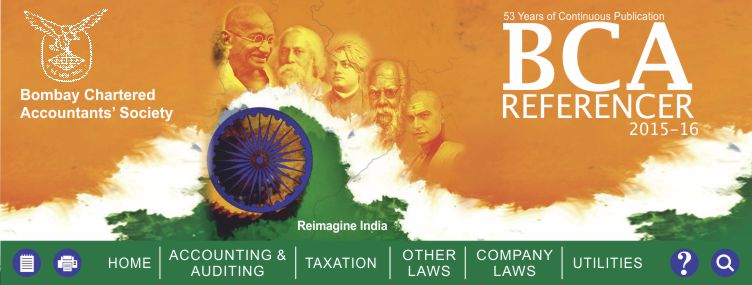Income from House Property
|
In case of all assessees, “Income from house property” shall be computed as under:
- In the case of Let Out Property [whether for residential purpose or for business purpose]
The annual value of any property shall be deemed to be
- The sum for which property might reasonably be expected to let from year to year or
- When property or any part of property is let, the annual rent received/receivable less unrealised rent or the sum as above, whichever is higher.
- Where property or part of it is let and was vacant for whole or part of year, and rent received/receivable less unrealised rent is less than the sum as per (i) above due to the vacancy, then the rent actually received/receivable.
Deduction shall be allowed as under:
|
Nature of Deduction
|
Section
|
Limit/Condition
|
|
|
1
|
Municipal Tax, etc.
|
23(1) First proviso
|
Only if borne and paid by the owner.
|
|
2
|
Standard deduction
|
24 Clause (a)
|
30% of Annual Value.
|
|
3
|
Interest on borrowed capital
|
24 Clause (b)
|
Interest payable on capital borrowed for the purpose of acquisition, construction, repair, renewals or reconstruction only.
|
Preconstruction Interest
Interest for the period prior to acquisition or construction would be deductible in five equal instalments from the year of completion.
- In the case of one self-occupied house property
The annual value of a self-occupied house or part of such house shall be nil. Further deduction shall be allowable as under:
|
Nature of Deduction
|
Section
|
Limit/Condition
|
|
Interest on borrowed capital
|
24 Clause (b)
|
₹ 2,00,000/- from A.Y. 2015-16 onwards, provided : (₹ 1,50,000/- up to A.Y. 2014-15).
|
|
|
|
i. Property is acquired or constructed on or after 1-4-1999 and such acquisition or construction is completed within 3 years from the end of the financial year in which capital was borrowed.
|
|
|
|
ii. A certificate from the lender certifying interest payable to him is furnished by the assessee.
|
|
|
|
In other cases, ₹ 30,000. Interest in excess of above may qualify for rebate u/s. 80C(2)(xviii) (Re : Krishnan Kuppuswami vs. ITO 74, taxmann 289) (Pune Trib.). No other deduction allowed in respect of one self-occupied property whose value is taken at NIL.
For A.Ys. 2014-15 and 2015-16, additional deduction is available to an individual up to ₹ 1,00,000/- for interest payable on housing loan – see section 80EE for further details.
|
- In the case of more than one self-occupied house property
Only one house according to assessee’s choice is treated as self-occupied and deduction mentioned in B will be allowed. In respect of all other houses, even though self-occupied, notional income as stated in A(i) above will have to be computed. In such cases, all deductions mentioned in ‘A’ would be available.
- Please refer page 9.35 for Set off and carry forward of losses.
- Property owned by co-owners – S. 26
Where property consisting of buildings or buildings and lands appurtenant thereto is owned by two or more persons and their respective shares are definite and ascertainable, such persons shall not be assessed as an A.O.P. (Association of Persons) but the share of each person in the income from the property as computed u/ss. 22 to 25 (i.e., Income from house property) shall be included in his total income.
- Arrears of Rent – S. 25B
Arrears of rent received in respect of let out property, if not charged to tax in earlier previous year, is taxable in the year of receipt after deducting 30% of such amount for repair, etc.
Back to Top
|
